
How to Use ESP8266 ESP-03 WiFi Module: Examples, Pinouts, and Specs
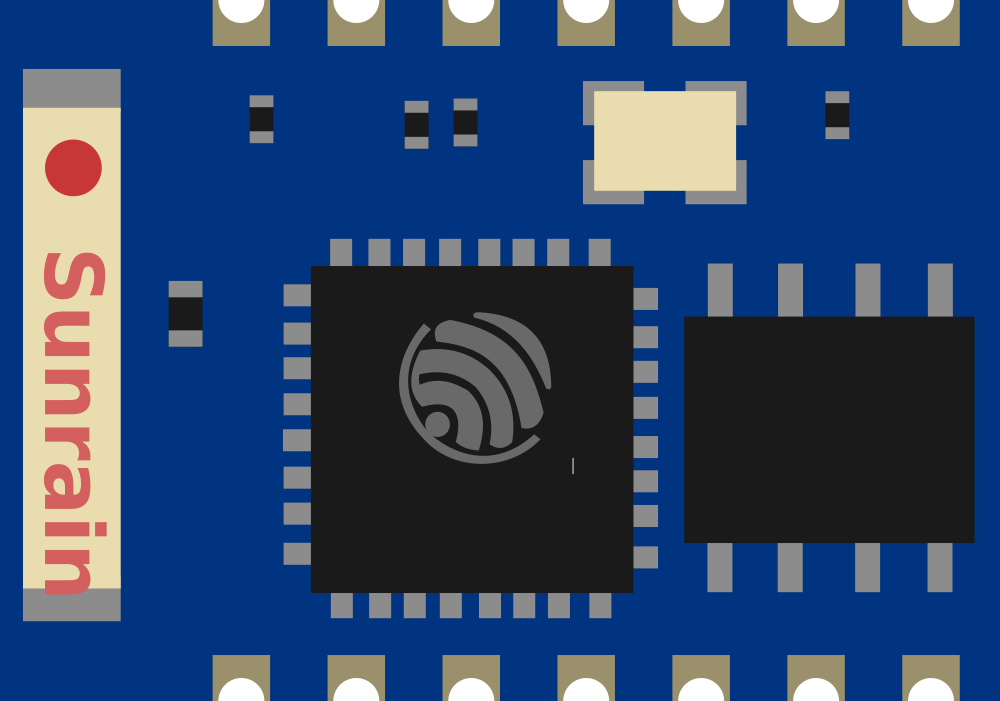
 Design with ESP8266 ESP-03 WiFi Module in Cirkit Designer
Design with ESP8266 ESP-03 WiFi Module in Cirkit DesignerIntroduction
The ESP8266 ESP-03 WiFi Module is a self-contained wireless networking solution that offers a combination of versatility, reliability, and cost-effectiveness. Based on the popular ESP8266 chipset, the ESP-03 module provides WiFi connectivity along with a powerful on-chip microcontroller, enabling users to develop Internet of Things (IoT) applications with ease. Its compact form factor and integrated antenna make it ideal for space-constrained projects. Common applications include home automation, sensor networks, and wireless data logging.
Explore Projects Built with ESP8266 ESP-03 WiFi Module
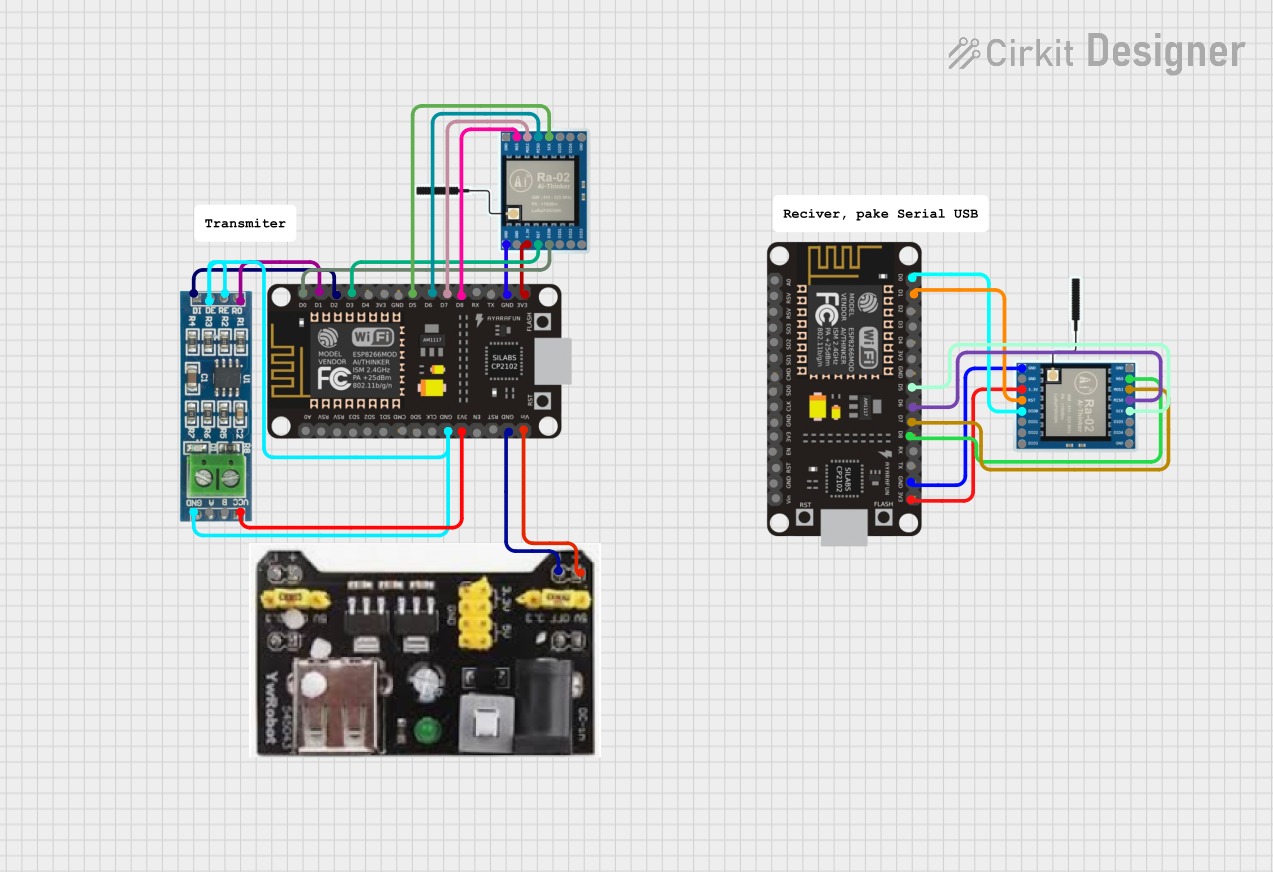
 Open Project in Cirkit Designer
Open Project in Cirkit Designer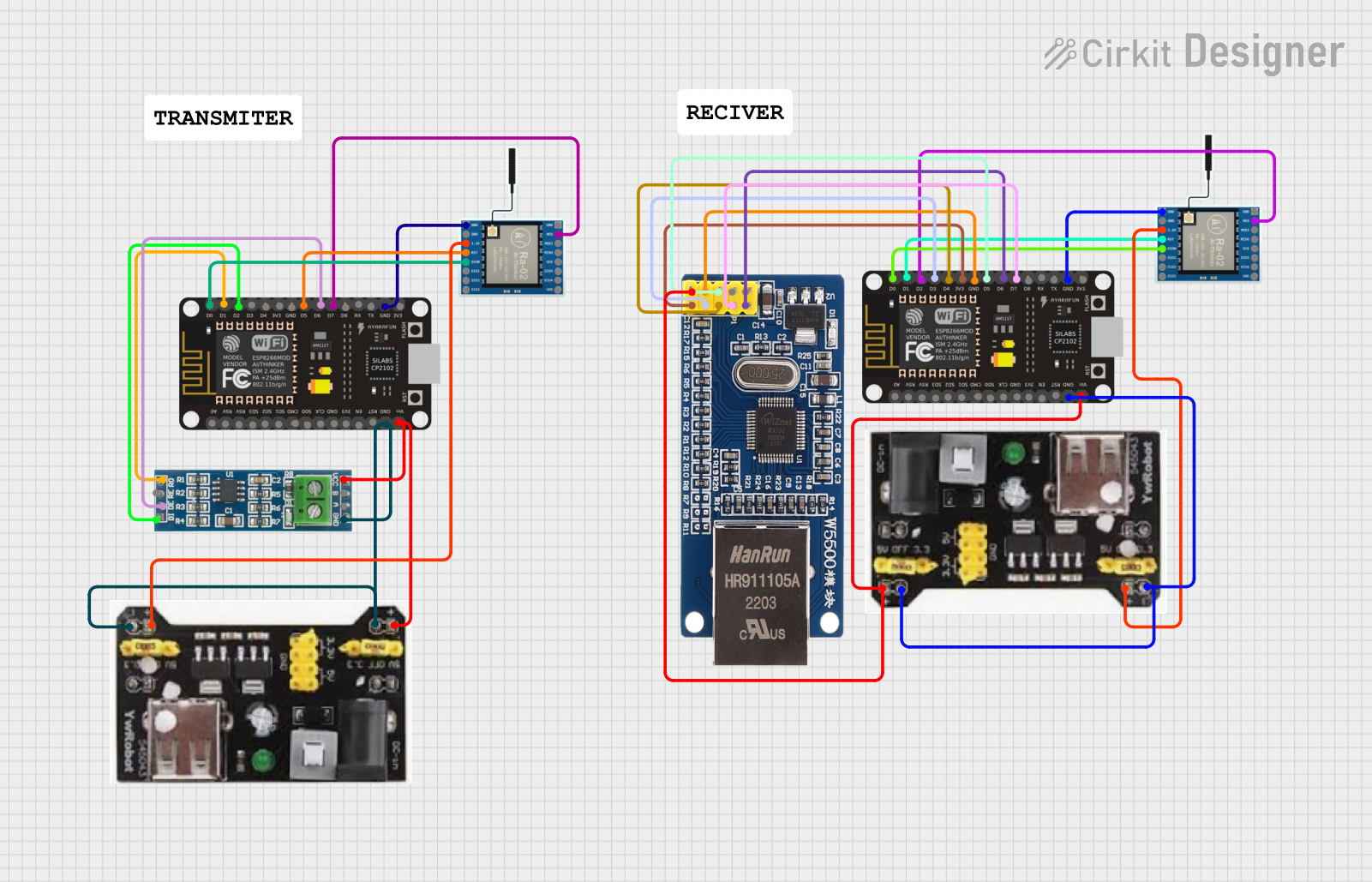
 Open Project in Cirkit Designer
Open Project in Cirkit Designer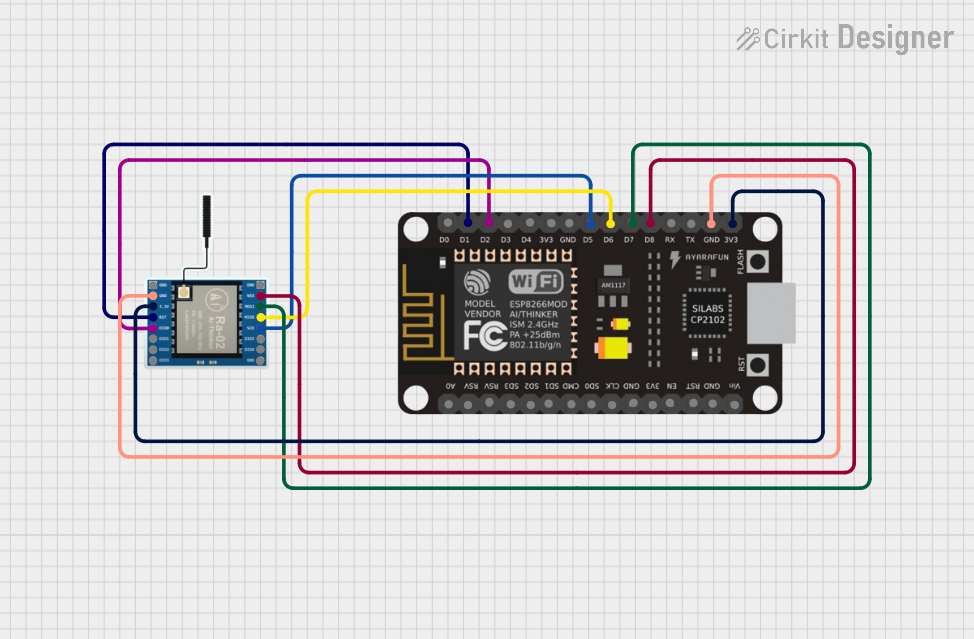
 Open Project in Cirkit Designer
Open Project in Cirkit Designer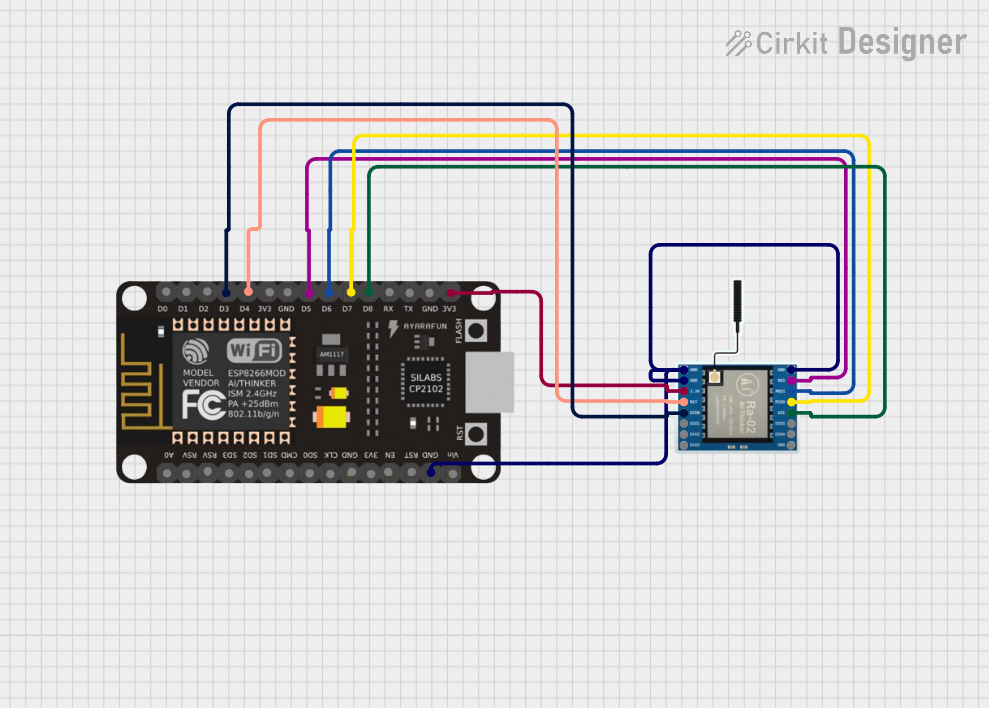
 Open Project in Cirkit Designer
Open Project in Cirkit DesignerExplore Projects Built with ESP8266 ESP-03 WiFi Module

 Open Project in Cirkit Designer
Open Project in Cirkit Designer
 Open Project in Cirkit Designer
Open Project in Cirkit Designer
 Open Project in Cirkit Designer
Open Project in Cirkit Designer
 Open Project in Cirkit Designer
Open Project in Cirkit DesignerTechnical Specifications
General Features
- Integrated TCP/IP protocol stack
- WiFi Direct (P2P), soft-AP
- Integrated low power 32-bit CPU, which can also serve as an application processor
- SDIO 1.1 / 2.0, SPI, UART
- STBC, 1x1 MIMO, 2x1 MIMO
- A-MPDU & A-MSDU aggregation & 0.4ms guard interval
- Wake up and transmit packets in < 2ms
- Standby power consumption of < 1.0mW (DTIM3)
Electrical Characteristics
- Power Supply: 3.3V
- Current Consumption: Average ~80mA
- Operating Temperature Range: -40°C to 125°C
Pin Configuration and Descriptions
| Pin Number | Name | Description |
|---|---|---|
| 1 | GND | Ground |
| 2 | GPIO0 | General Purpose I/O 0 |
| 3 | GPIO2 | General Purpose I/O 2 |
| 4 | RX | UART Receive Pin |
| 5 | TX | UART Transmit Pin |
| 6 | CH_PD | Chip Power-Down Pin |
| 7 | RST | Reset Pin |
| 8 | VCC | 3.3V Power Supply |
Usage Instructions
Integrating with a Circuit
Power Supply: Ensure that the module is powered with a stable 3.3V supply. Exceeding the voltage rating can damage the module.
Serial Communication: Connect the RX and TX pins to a serial converter or microcontroller to enable UART communication.
GPIO Pins: GPIO0 and GPIO2 can be used for custom functions, but note that GPIO0 must be low during power-up to enter flash mode.
Reset and Chip Enable: The RST pin can be used to reset the module. The CH_PD pin must be pulled high to enable the chip.
Best Practices
- Use a high-quality 3.3V voltage regulator to avoid power supply issues.
- Ensure proper antenna placement and orientation for optimal wireless performance.
- Avoid placing the module near metal objects or surfaces that may interfere with signal propagation.
- Implement proper ESD precautions when handling the module to prevent damage.
Example Code for Arduino UNO
#include <ESP8266WiFi.h>
// Replace with your network credentials
const char* ssid = "your_SSID";
const char* password = "your_PASSWORD";
void setup() {
Serial.begin(115200); // Start serial communication at 115200 baud
WiFi.begin(ssid, password); // Connect to the WiFi network
while (WiFi.status() != WL_CONNECTED) { // Wait for connection
delay(500);
Serial.print(".");
}
Serial.println("");
Serial.println("WiFi connected");
}
void loop() {
// Put your main code here, to run repeatedly:
}
Troubleshooting and FAQs
Common Issues
- Module Does Not Power On: Check the power supply and connections to ensure the module is receiving 3.3V.
- Cannot Connect to WiFi: Verify the SSID and password are correct. Ensure the module is within range of the router.
- Serial Communication Failure: Ensure that the baud rate of the module matches the baud rate set in your microcontroller's UART settings.
FAQs
Q: Can the ESP-03 module be used with a 5V power supply? A: No, the ESP-03 requires a 3.3V power supply. Using a 5V supply can permanently damage the module.
Q: How can I improve the WiFi range of the ESP-03 module? A: Ensure that the antenna is properly oriented and placed away from metal objects. Additionally, consider using an external antenna if your design allows for it.
Q: What is the maximum number of GPIO pins available on the ESP-03? A: The ESP-03 provides access to two GPIO pins, GPIO0 and GPIO2.
Q: How do I flash new firmware onto the ESP-03? A: To flash firmware, GPIO0 must be held low during power-up to enter flash mode. Use a serial-to-USB converter to upload the firmware via the UART interface.
This documentation provides an overview of the ESP8266 ESP-03 WiFi Module, its technical specifications, usage instructions, example code for Arduino UNO, and troubleshooting tips. For more detailed information, refer to the manufacturer's datasheets and user guides.